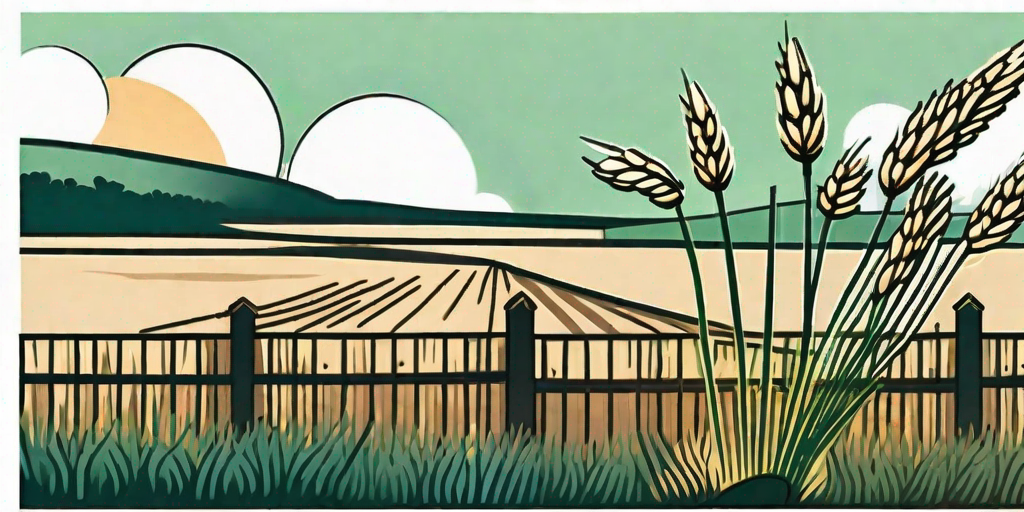
The art of growing your own barley garden is a rewarding endeavor that combines the joys of gardening with the satisfaction of producing your own ingredients for brewing or baking. If you've ever dreamed of sipping on a pint of home-brewed beer or biting into a loaf of bread made from your own barley, you're in the right place. Let's dive into the world of barley cultivation, where every season ends with a toast to a bountiful harvest.
Understanding Barley: A Grain of Antiquity
Barley, scientifically known as Hordeum vulgare, is one of the oldest cultivated grains in human history. It's a versatile crop, used in various culinary applications, from brewing beer to making soups and bread. But before we get our hands dirty in the garden, let's appreciate the rich history and nutritional value of this ancient grain.
Originating in the Fertile Crescent, barley has been cultivated for over 10,000 years. It was a staple in ancient civilizations, from the Egyptians to the Greeks, and was often used as a form of currency. Today, it continues to be a vital crop, grown in diverse climates around the world.
Not only is barley historically significant, but it's also a nutritional powerhouse. It's packed with fiber, vitamins, and minerals, and is known for its heart health benefits. So, growing your own barley garden is not just a fun hobby, but also a step towards a healthier lifestyle.
Getting Started: The Barley Gardening Basics
Now that we've paid homage to our grain of antiquity, it's time to roll up our sleeves and get to work. Growing barley is a relatively straightforward process, but like any gardening project, it requires preparation and care. Here's what you need to know to get started.
Choosing the Right Barley Variety
There are two main types of barley: two-row and six-row. Two-row barley has larger grains and is typically used for malting and brewing due to its lower protein and higher sugar content. Six-row barley, on the other hand, has smaller grains and is often used for animal feed and some brewing applications.
For home gardening, two-row barley is often the preferred choice. However, the best variety for you will depend on your specific needs and climate. Research the varieties that grow well in your region and choose one that suits your intended use.
Preparing the Soil
Barley thrives in well-drained soil with a pH between 6.0 and 7.5. It's a good idea to test your soil before planting and amend it as necessary. Adding organic matter like compost can improve soil fertility and structure, promoting healthier barley growth.
Remember, barley is a cool-season crop and prefers cooler temperatures. It's best to prepare your soil in late summer or early fall for a spring harvest.
Planting and Caring for Your Barley
Once your soil is ready, it's time to plant your barley seeds. Sow the seeds about 1 to 2 inches deep and 2 to 3 inches apart. Water thoroughly after planting and keep the soil consistently moist until the seeds germinate.
As your barley grows, keep an eye out for pests and diseases. Common barley pests include aphids and wireworms, while diseases can include rust and smut. Regularly inspect your plants and take action at the first sign of trouble.
Harvesting and Using Your Barley
After months of nurturing your barley plants, it's finally time to reap the fruits of your labor. Harvesting barley is a process that requires timing and technique. But don't worry, with a little practice, you'll be a pro in no time.
Knowing When to Harvest
Barley is typically ready to harvest when the grains are dry and the stalks have turned from green to a golden brown. This usually occurs about 40 to 50 days after planting. To test if your barley is ready, try biting into a grain. If it's hard and crunchy, it's time to harvest.
Harvesting Your Barley
To harvest your barley, simply cut the stalks near the base using a scythe or sickle. Bundle the stalks together and let them dry in a sunny, well-ventilated area for a few days. Once dry, you can thresh the barley by beating the bundles to separate the grains from the stalks.
Using Your Homegrown Barley
Now for the fun part: using your homegrown barley! If you're a home brewer, you can malt your barley for beer making. If baking is more your style, you can grind the barley into flour for bread and other baked goods. And of course, you can always cook the whole grains for a hearty and nutritious addition to soups and salads.
Frequently Asked Questions
Can I grow barley in any climate?
Barley is a versatile crop that can grow in a variety of climates. However, it prefers cooler temperatures and may not perform well in hot, tropical climates.
How much barley can I expect to harvest?
The yield of your barley garden will depend on various factors such as the variety of barley, the fertility of your soil, and your care practices. However, on average, you can expect to harvest about 60 to 80 pounds of barley per 1,000 square feet.
Can I use barley straw in my garden?
Absolutely! Barley straw is a fantastic mulch that can help retain soil moisture, suppress weeds, and add nutrients to your soil as it decomposes.
Conclusion
There you have it, the complete guide to growing your own barley garden. It's a journey that takes time, patience, and a bit of elbow grease, but the rewards are well worth it. So, here's to a bountiful harvest and the many delicious barley-based creations that await. Cheers!











